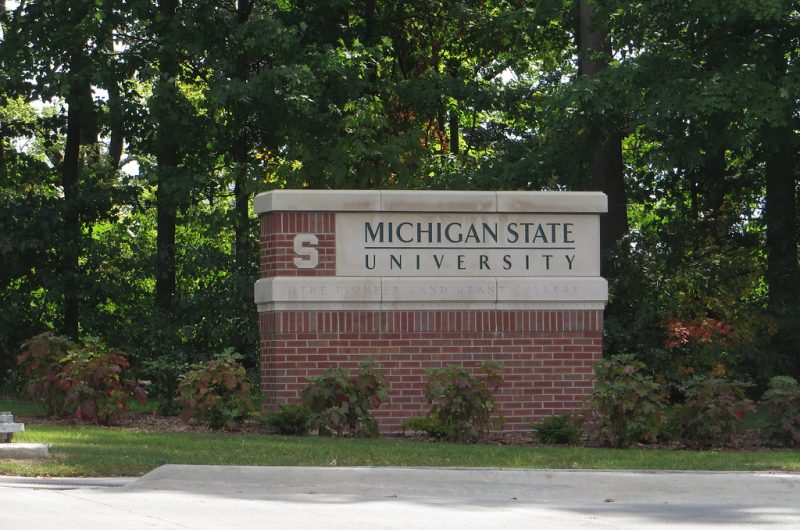Rural students face unique technological challenges amid COVID-19 pandemic
The opinions expressed in this publication are those of the authors, and do not necessarily reflect the opinions or views of Rural Insights or its members.

COVID-19 has brought to light many challenges facing the education field, and for rural schools these challenges have presented themselves in different ways than they have in urban and suburban schools.
Administrators and teachers have had to navigate online learning formats such as Zoom and Google Classroom, while exploring other platforms that students cannot only use, but through which they can express their understanding of the content and get extra support if they need it.
For many communities in Michigan’s Upper Peninsula, unique barriers have emerged for rural students.
Two U.P. superintendents were interviewed for this article–Dr. Greg Nyen from Burt Township
Schools (enrollment of 31 students) in northern Alger County, and George Stockero from Copper Country Intermediate School Districts (enrollment 6,600), which provide services and programs to all 13 school districts in Baraga, Houghton, and Keweenaw counties.
Each stated that their school districts sent surveys to students assessing what kind of technology they had available to them in their homes. According to the results, a quarter to half of their students do not have internet access; other results included that half to three quarters of students have computers and other technology hardware to do schoolwork.
Dr. Nyen and Mr. Stockero also explained that local schools acted proactively from the beginning of Michigan Governor Whitmer’s Stay Home, Stay Safe Executive Order by adjusting their lessons to different formats for students with a variety of abilities.
Both superintendents stated that schools sent various school resources to students’ homes, which has helped provide students with the technological equipment to do school work.
However, Wi-Fi access is still a work in progress. Some local telecommunications companies have enhanced their own software to increase internet access for students via hotspots or reduced pricing for equipment, as internet usage has increased for many customers due to many parents working from home and students doing more homework.
Without reliable internet access, students will not be able to complete their work on time or be able to get the help they need.
Dr. Nyen stated that one of the biggest obstacles that has emerged is that many students were not as proactive in completing online school work from the beginning of the stay-at-home order, because many schools simply moved their spring breaks up to accommodate the stay-home order, and many parents and students assumed that schools were going to go back into session before the end of the 2019-20 school year.
“That premise gave many students and families permission to not participate despite our constant contact with them,” Nyen stated. “Participation should be required, not optional. Given the likelihood of school closures in the upcoming school year, the messaging around participation needs to be different than it was in March 2020.”
According to Mr. Stockero, families with multiple children and limited technology have struggled to adapt to online learning, with students unable to do school work simultaneously and frequently having their studies interrupted by siblings who also need to do their own virtual school work on a shared device.
“If you have six children and only one computer, it provides a unique problem where students could have their studies interrupted by a sibling” Stockero said.
Students also often lack the support systems at home to ensure they stay on task and do not fall behind their fellow classmates.
Congress has made resources available to schools via the CARES Act, which provided additional funding to K-12 school districts. Burt Township Schools received $1,339 and the schools within the Copper Country ISD received $660,907 in CARES Act funding.
However, the funds were distributed via the Title I formula, restricting what the funds can be spent on.
“The District used Title dollars to purchase and distribute mobile hotspots to those students without access to the internet” Nyen stated. He hopes that more Wi-Fi access will help his students.
COVID-19 has sparked a renaissance within the education sector, with schools forced to use different and innovative methods to deliver educational outcomes, no matter the circumstances.
With the potential for a second wave of COVID-19 infection in the fall, the biggest responsibilities for schools this summer will be to make sure content can be delivered through multiple formats in preparation for potential future outbreaks.
Remote learning may play a significant role in the future of education, especially in rural areas, and there is no doubt that resources like computers and high-speed internet need to be made more accessible to students who live in rural areas like the Upper Peninsula.
Without these tools, the digital divide in education is only going to widen further, and rural students are not going to have the same educational opportunities as students in most urban and suburban districts–all because of where their family calls home.






Well presented